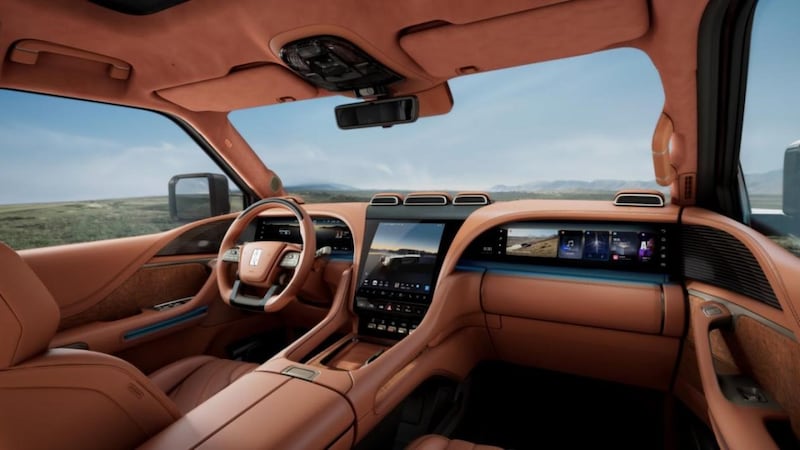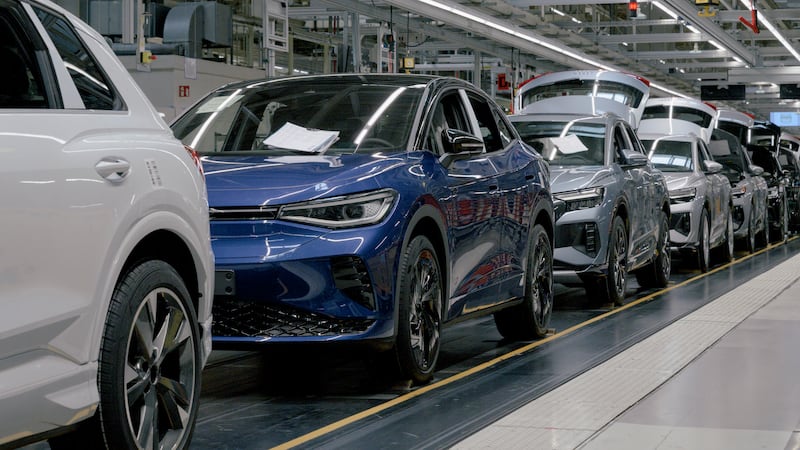There aren’t many cars that have become globally famous (infamous, perhaps?) when they’ve only gone on sale in one market, but the Yangwang U8 has most definitely hit such heights.
Yangwang is the super-luxury brand of BYD, the massive Chinese company that came to Ireland last year with its trio of electric models – successfully so. So far, Yangwang models are sold only in China and the U8 competes with the highest-end Range Rovers and Mercedes SUVs.
Well, I say competes. Towers over them more like. This is a truly massive car, fully American in size really. It’s as long as the longest eight-seat Land Rover Defender 130, in spite of being a mere five-seater. It’s as tall as an office block and about as heavy, and therein lies the tripwire that will likely mean that this enormous SUV probably won’t go on sale in Ireland.
You see, at the kerb it weighs 3.6 tonnes, which means that you need to hold a HGV licence to legally drive it on Irish roads. The only reason I’m getting away with driving one, with my lowly category B licence, is that we’re on a private test-track and in China, so far away from the beady gaze of any inquisitive garda with a weighbridge.
RM Block
What might surprise you about the U8 is that it’s actually got a 2.0-litre engine. How on Earth can something that weighs this much shift its bulk with a 2.0? Because the engine never touches the wheels – it’s there purely as a range-extender to top up the 49kWh battery as you drive. The U8, fully charged, has a theoretical electric range of up to 180km, but with a full tank of fuel, it can run for up to 1,000km (mind you, those figures are based on the official Chinese tests, which tend to be more optimistic than European tests).
None of which is especially important because you just want to know the cool stuff. Yes, it really can “tank-turn” using its four electric motors to spin the front and rear wheels in opposite directions to spin itself through 360 degrees on the spot (although what kind of damage that would do to your tyres is anyone’s guess).
[ Stella Li of Chinese car maker BYD: ‘We don’t want to engage in a price war’Opens in new window ]
Yes, it has 1,196hp and can accelerate to 100km/h in 3.6 seconds, and, yes, the underside is entirely sealed so it will float, for at least 30 seconds, in deep enough water. Better yet, the electric motors are waterproofed, so it can keep spinning the wheels so that they act as ersatz paddles to keep you moving. Mind you, it does automatically open the sunroof just in case you need to bail out . . .

Sadly, we didn’t get to try any of that out, and instead were limited to a couple of laps of a tight and twisty test-track to judge the U8′s dynamic abilities. It’s a pretty narrow prism through which to view a car, but it’s better than nothing, I suppose. The U8 doesn’t feel quite as massive as it is from the driver’s seat, but that may be because there were no constricting lines or shoaling traffic anywhere near me.
The steering is quite nicely weighted, not dissimilar to that of a Range Rover, and thanks to good-quality Continental tyres (not always a given for Chinese cars) the U8 actually gripped and steered with relative vim around the narrow, incredibly slippery track, helped by the active suspension that uses hydraulic rams to help balance the body (and which can lift a flat tyre or damaged wheel out of the way and allow you to get home on three wheels) and the fact that the four electric motors can send power to each individual wheel as required.
Clearly, this was the U8 well and truly out of its element, and while it actually did okay in such conditions, it would unquestionably be happier by far pulling up outside a chi-chi restaurant in downtown Shanghai, or bashing its way across a dune in the Arabian gulf. So, on track, it rolls and wallows, but possibly not to excess and probably no worse than many of its competitors would have fared in similar circumstances.

Inside, you’re presented with a trio of screens spread across a dashboard which seems to owe some debt to the cabin of a Bentley Bentayga. Quality levels are good, but possibly not quite up to Bentley levels, although it would help to see it in a colour other than the retina-blasting orange that had dyed the leather on the seats and dashboard of our test car. Space in the back is predictably luxurious, but the front seats felt a touch narrow for a wide-body European such as me, although that could have been the active seat bolsters, squeezing tight to try and hold me in place as the U8 rolled over on to its doorsills through another slow hairpin.
If the weight limit could be circumvented, it would probably cost at least €250,000 in Irish terms, and possibly more than that. All from a brand of which few have heard, placing it against European and Japanese motoring royalty. Not an easy sell, then. But BYD has never yet taken the easy route, and while for most of us the U8 will be little more than something amusing to watch on YouTube, it is a demonstration of the exceptional engineering prowess that’s powering BYD’s growth. And while the U8 – likely – won’t come here, the technology that’s underneath it most certainly will.
- Sign up for push alerts and have the best news, analysis and comment delivered directly to your phone
- Find The Irish Times on WhatsApp and stay up to date
- Listen to our Inside Politics podcast for the best political chat and analysis



















